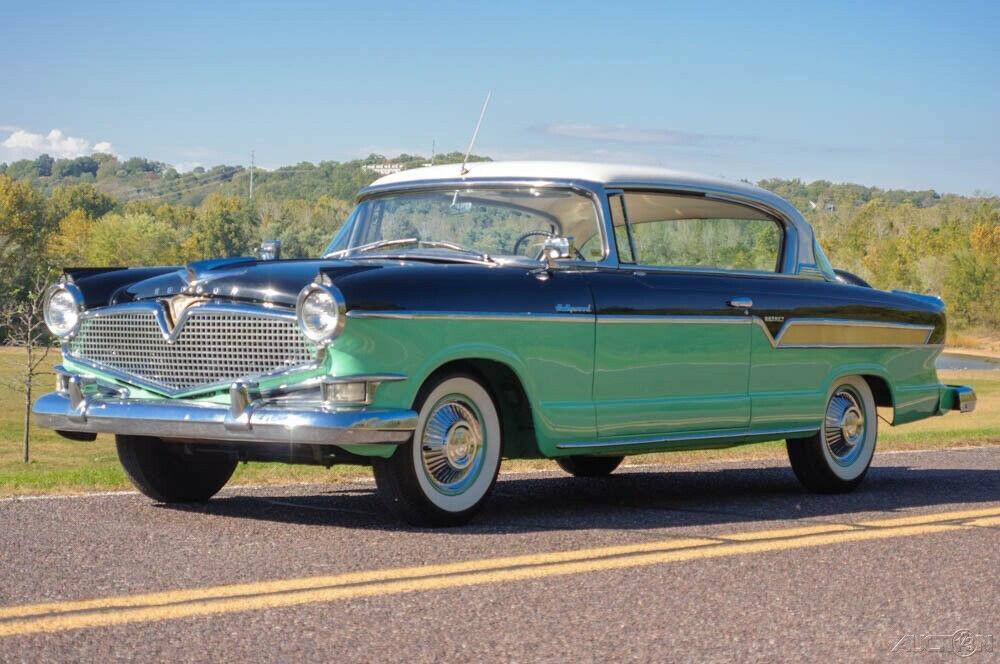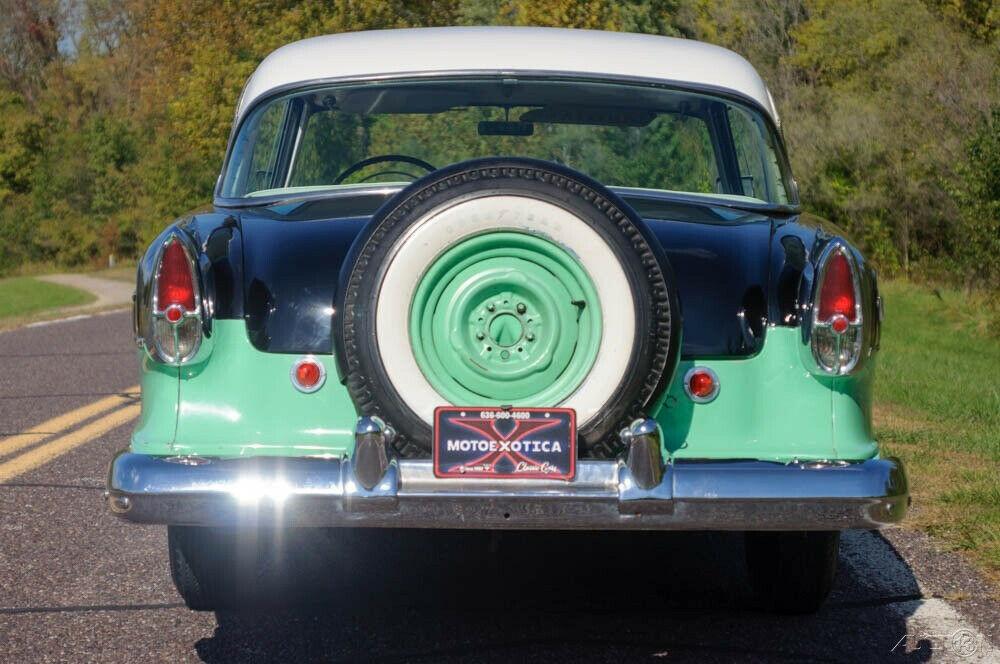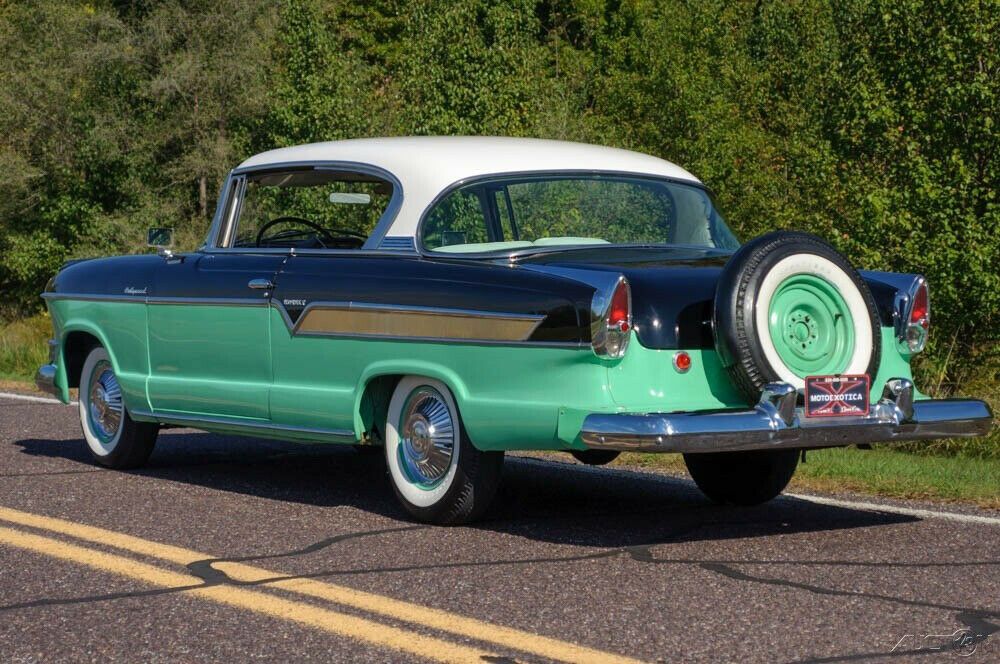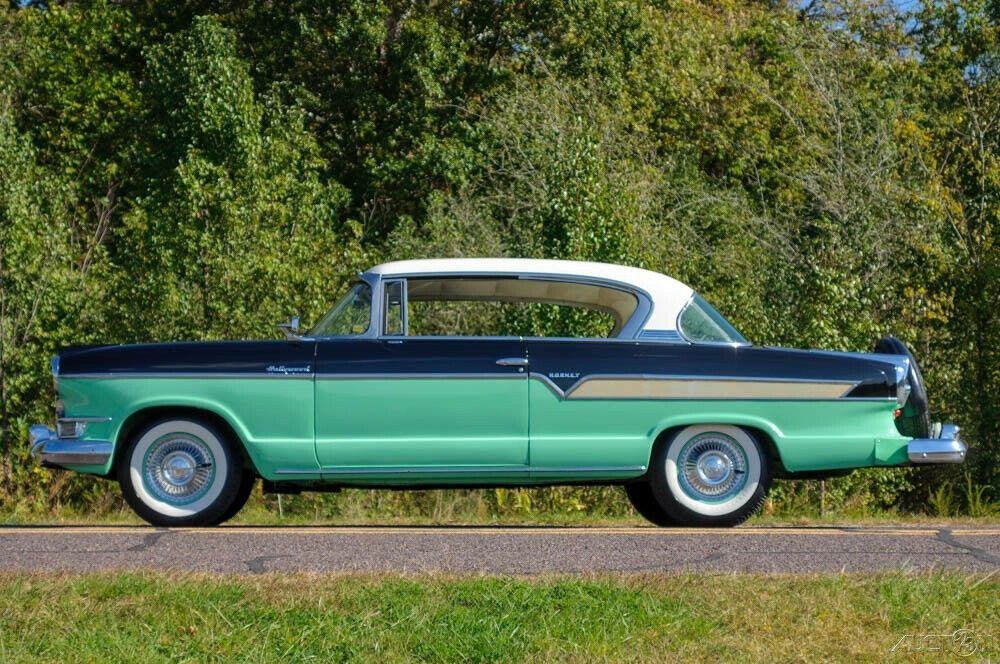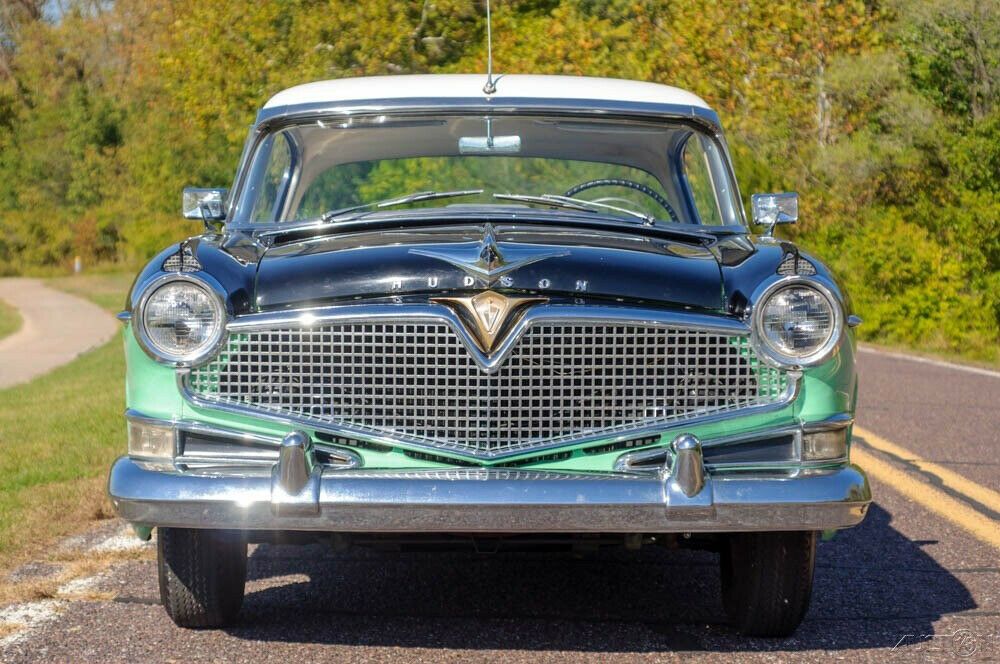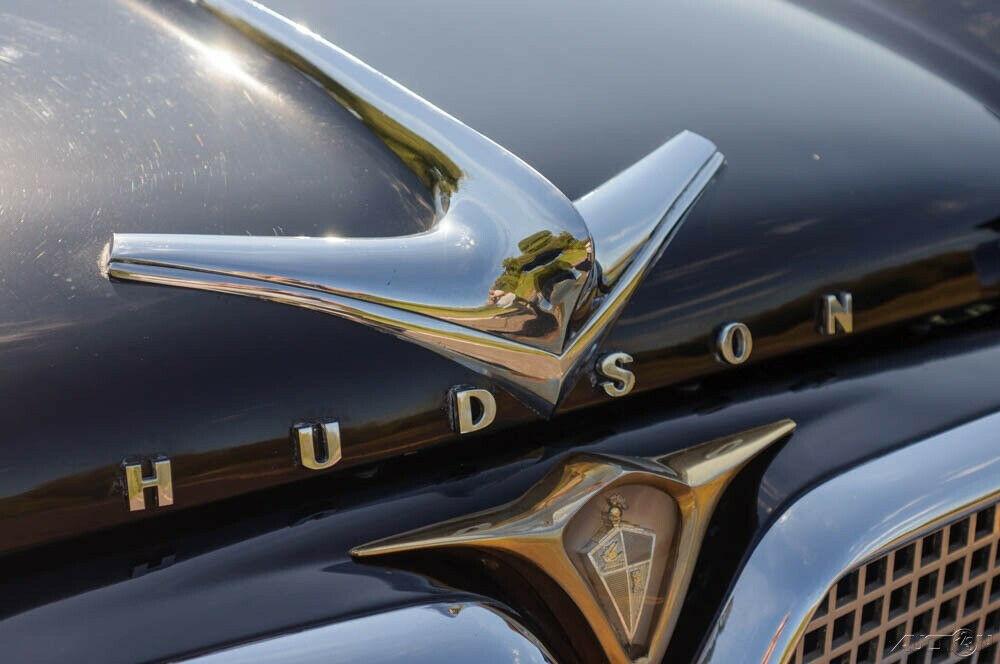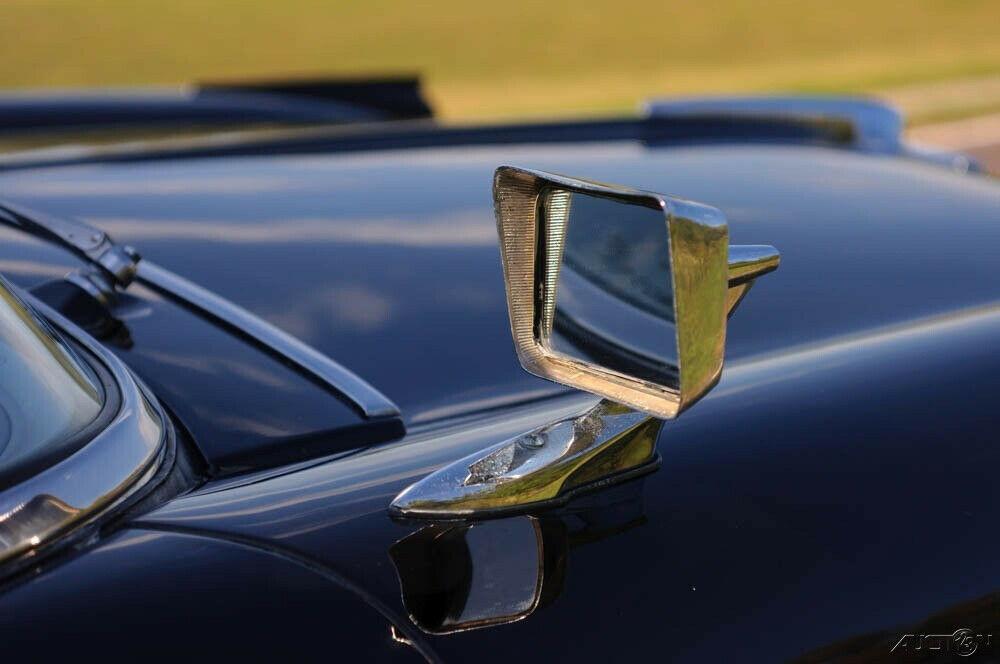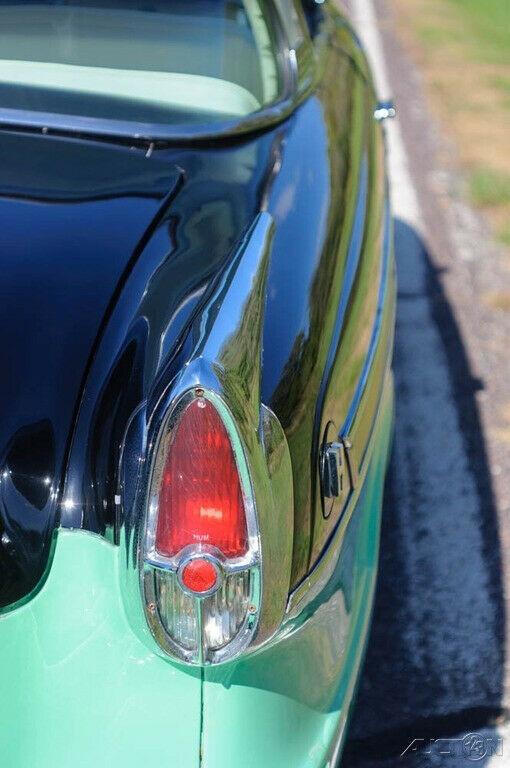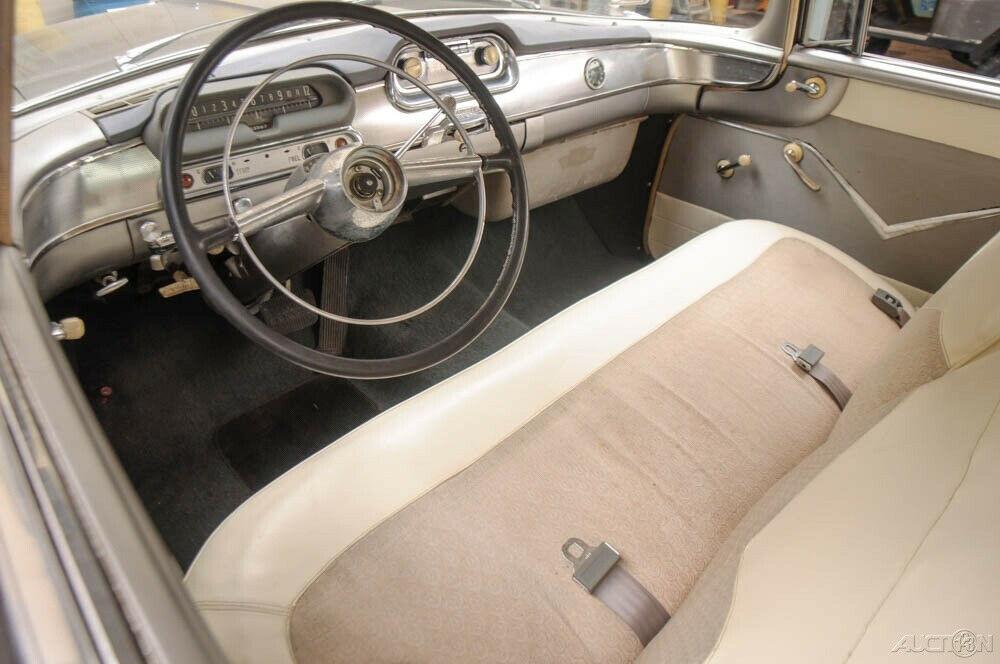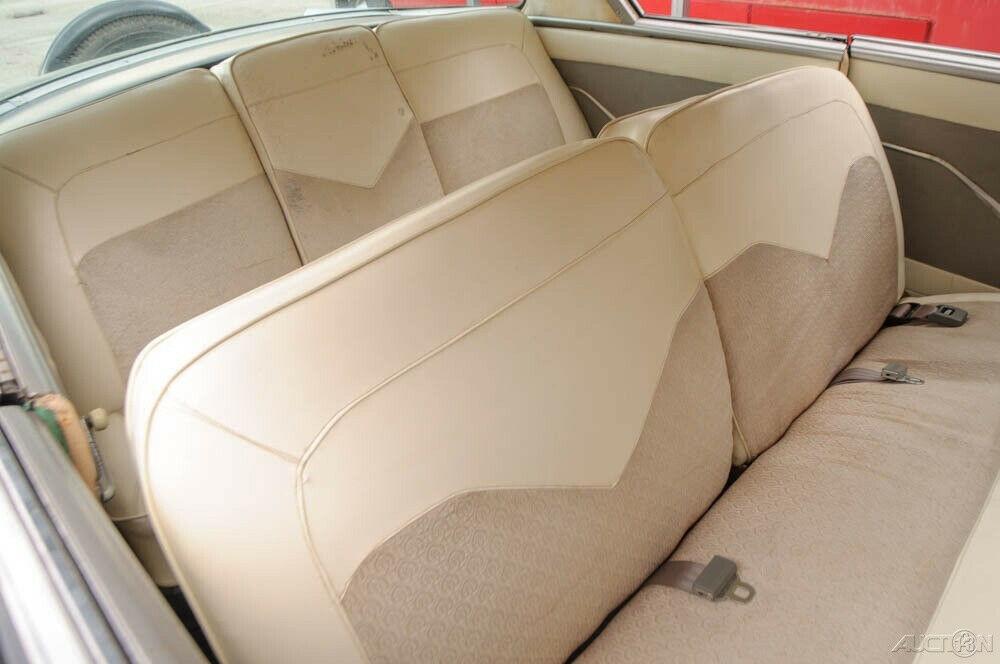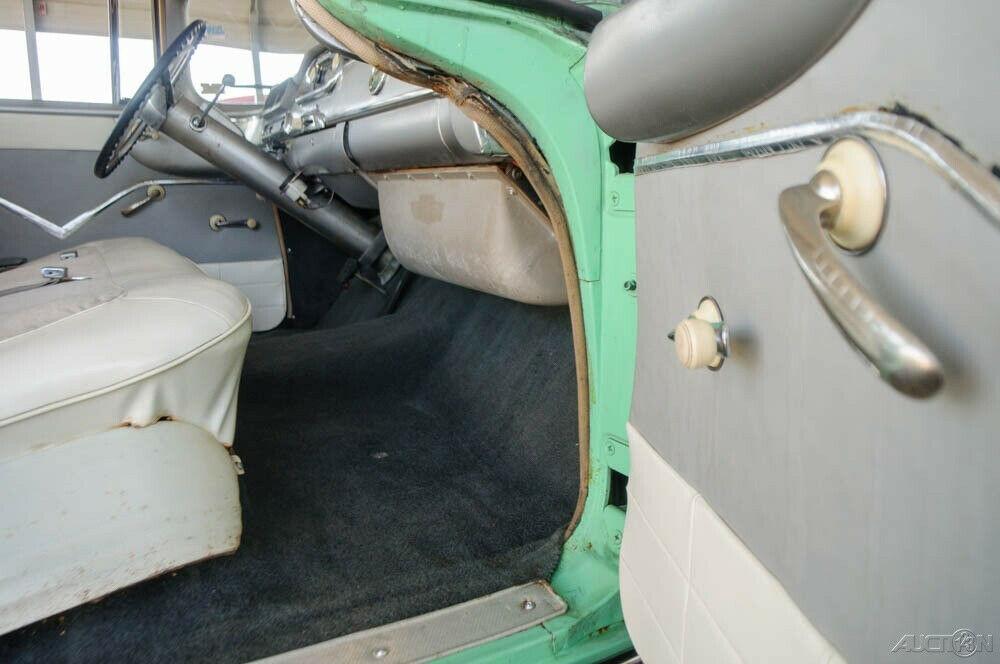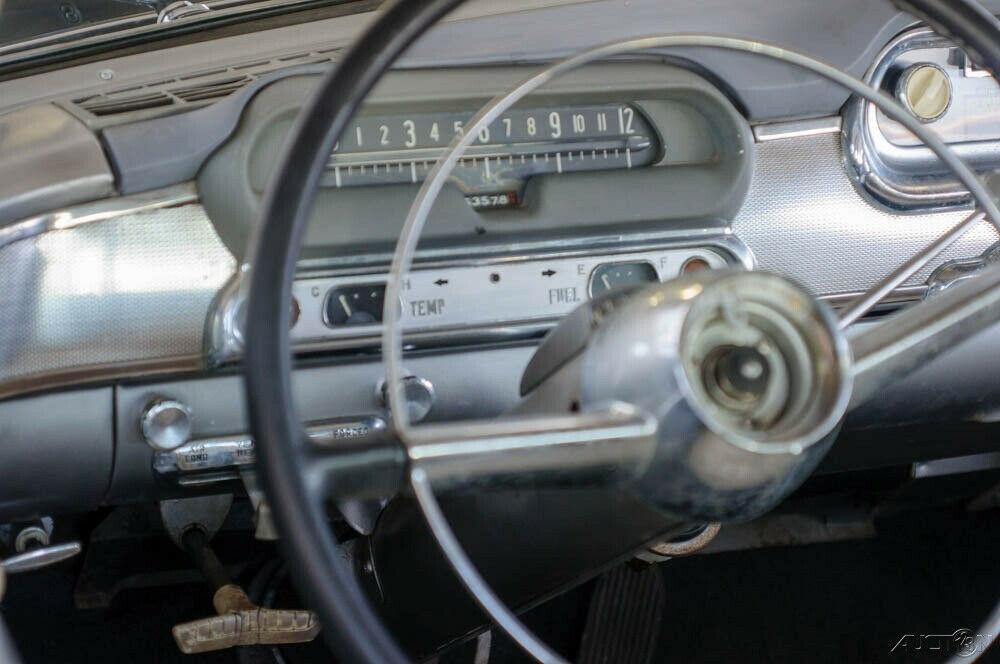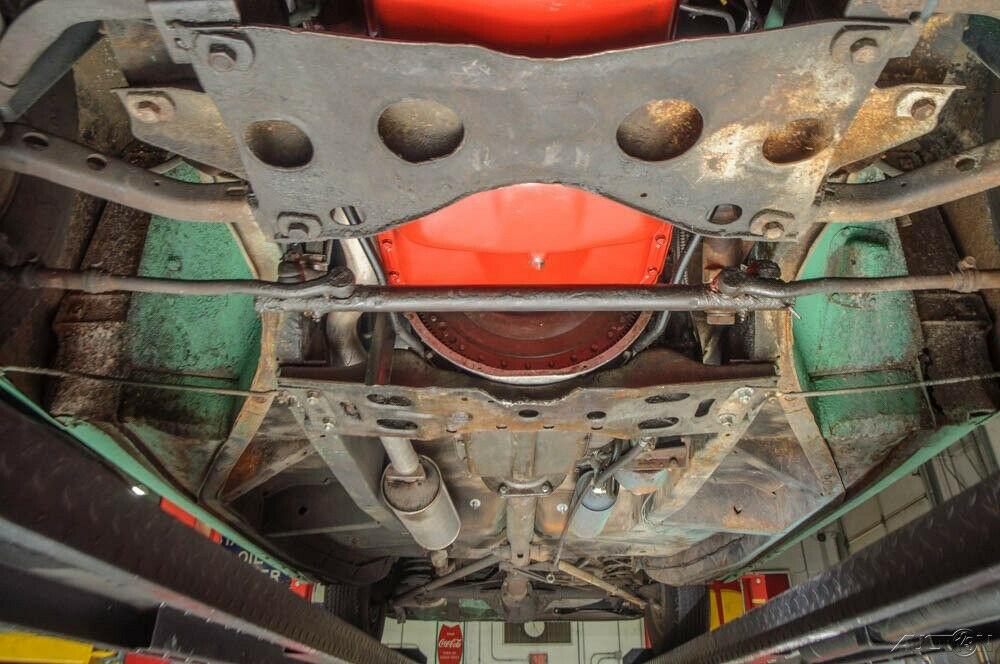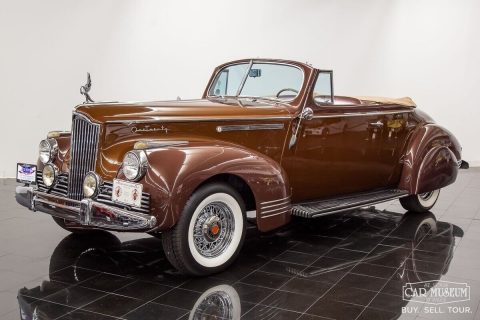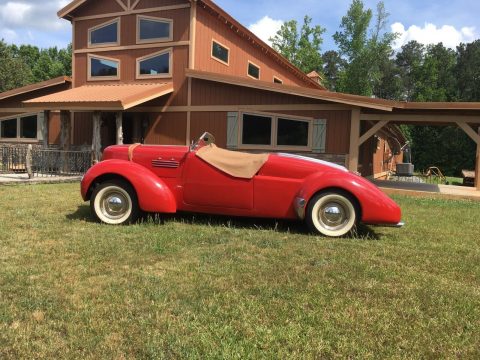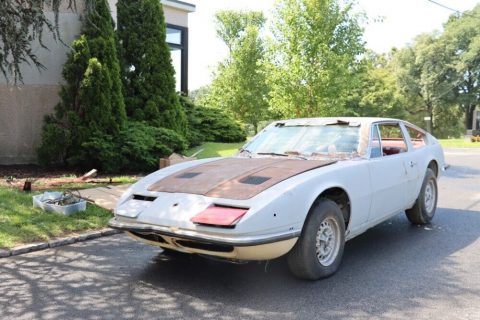- Next-to-last model year for Hudson’s Hornet
- One of only 1,640 Hollywood two-door hardtops produced in 1956
- Racing-inspired 175 hp “Twin-H-Power” 308 CID straight six-cylinder engine
- Hydramatic four-speed automatic transmission with 4.10 gearing
- Frost White (72) over Black (01) over Mint Green (77) exterior with rear Continental kit
- Forsythe Silver/Off-white cloth/vinyl interior (code 676)
- Factory air-conditioning
Fresh from a merger between Nash-Kelvinator and Hudson to form American Motors Corporation (AMC), the Hornet’s low-slung appearance and silky handling gave Hudson an image that for some customers, eclipsed luxury brands such as Cadillac. This seldom-seen example is one of 1,640 Hollywood Hardtop Hornets made in 1956 and is optioned with Twin H-Power and air conditioning.
Made in Nash’s Wisconsin factory, this car wears one of the 1950s design ideas – tri-tone paint. Here, we have Frost White (72) over Black (01) over Mint Green. The paint and trim area in overall very good order, while the bodywork is straight and solid, the engine bay is very tidy, the chrome bumpers look good and fit well to the car, including the rear Continental kit.
This Hudson rolls on Goodyear Super Cushion tires, size 7.10-15 at every corner. Each tire is mounted on a steel wheel and topped by a factory wheel cover. The tires are in good, original order while the wheel covers are in excellent order.
Under the hood is the tacing-inspired 175 hp “Twin-H-Power” 308 CID straight six-cylinder engine , backed by a Hydramatic four-speed automatic transmission and 4.10:1 rear end. Driver convenience features include air-conditioning.
Inside is a Forsythe Silver and off-white cloth/vinyl interior (code 676). The front and rear bench seats are in good order, while the gray carpet looks great. The two-spoke steering wheel is in general good order but with some pitted chrome and the horn is inoperable. The inner door panels and the instrument panel are all in good, original shape but the fuel and oil gauges are inoperable. A column-mounted shifter and a factory AM radio complete the interior. This is a factory air conditioning car but it is inoperable and missing some A/C components.
In 1954, Nash-Kelvinator capitalized on its experience in refrigeration to introduce the automobile industry’s first compact and affordable single-unit heating and air conditioning system. It was a true vapor-compression refrigeration system with a compact under the hood and cowl area installation. Combining heating, cooling, and ventilating, the new air conditioning system for the Nash cars was called the “All-Weather Eye.”
Nash models were the first American automobiles to have a front-end, fully integrated heating, ventilating and air-conditioning system. This was the first mass market system with controls on the dash and an electrically engaged clutch. This “first true refrigerated air conditioner system” for automobiles was also compact and easily serviceable with all of its components installed under the hood or in the cowl area. With a single thermostatic control, the Nash passenger compartment air cooling option was described as “a good and remarkably inexpensive” system.
Entirely incorporated within the engine bay, the combined heating and cooling system had cold air for passengers enter through dash-mounted vents. Nash’s exclusive “remarkable advance” was not only the “sophisticated” unified system, but also its price was significantly less than all the other systems. The optional air conditioning system offered by Oldsmobile cost more and it weighed twice as much as the integrated Nash unit that added only 133 pounds.
A feature was the “desert only” setting on the A/C thermostat control, a position that typically ran the compressor continually. In humid environments, the evaporator will freeze up from the accumulating condensation if the compressor operates constantly. Other temperature settings cycle the compressor to prevent this problem. Freeze up is not a concern in dry environments such as deserts and this setting provides constantly cooled airflow into the passenger compartment.
For the 1956 model year, AMC executives decided to give the Hornet more character and the design for the vehicles was given over to designer Richard Arbib, who provided the Hornet and Wasp with one of the more distinctive looks in the 1950s which he called “V-Line Styling.” Taking the traditional Hudson tri-angle, Arbib applied its “V” form in every conceivable manner across the interior and exterior of the car. Combined with tri-tone paint combinations, the Hudson’s look was unique and immediately noticeable.
The legendary 308 CID straight-six engine, with and without Twin-H Power, was offered and gained five horsepower for 1956. However, Packard’s V-8 engine was available only during the first half of 1956.
Competition to this Hudson in 1956 included Buick’s Series 40 Special Riviera Coupe, Chrysler’s Windsor, DeSoto’s Firedome, Dodge’s Coronet Lancer, Mercury’s Custom Coupe, Nash’s Ambassador, Oldsmobile’s Super 88 and Pontiac’s Star Chief Catalina.
This is one rare vehicle, with its mid-1950s styling and colors intact. Drop by MotoeXotica Classic Cars today to check it out for yourself.
Price: Auction
More info: Listing has ended. Click to search on eBay for similar 1956 Hudson (Affiliate link)
Seller's other items: motoexotica (Affiliate link)
Location: Fenton, Missouri, United States
